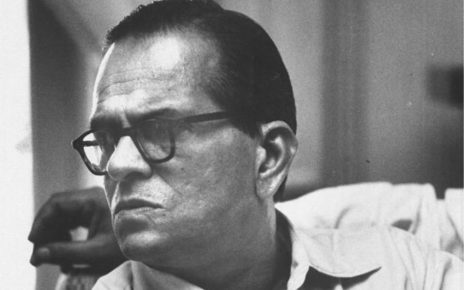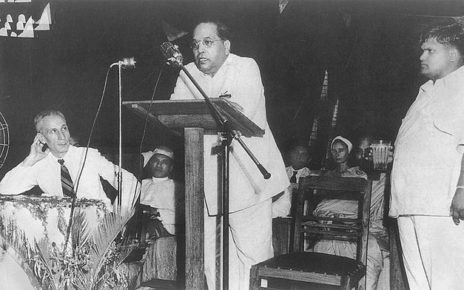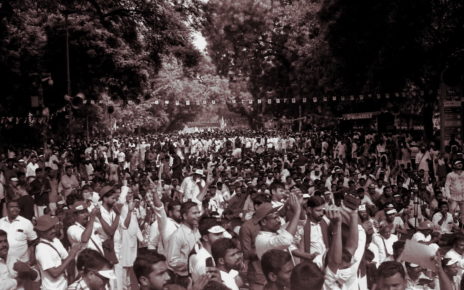(Originally published in The Indian Express, September 29, 2016.)
The state refused to admit that the murder of four members of a Dalit family in Maharashtra was a caste crime. Ten years later, the demand for a repeal of the legal protection for Dalits can be heard.
Khairlanji, the name of a village in Bhandara district of Maharashtra, evokes the power, brutality and arrogance of India’s caste system and the impunity enjoyed by its most cruel practitioners. It was here, on this date 10 years ago, that Surekha Bhotmange, a Dalit woman farmer, was killed along with her two sons, Roshan and Sudhir, who was visually disabled, and her 17-year-old daughter, Priyanka. Each of them had been subjected to the most horrible violence by members of the dominant OBC caste in this area, who now employ the same upper-caste hegemonic practices and methods against Dalits that they had been victims of, and which they had once fought against.
On September 29, 2006, they stripped the women, paraded, beat, raped and killed them. The dreadful photographs showed there was not an inch of the younger woman’s body that was not marked by bruises. The investigation was fixed at every stage to help the accused, from the deliberate delay in the search for the bodies, the destruction of evidence, to the fudged postmortem report and finally to the flawed chargesheet and the biased court proceedings.
The biggest travesty was that right from the initial stage, the caste basis for the violence against the Bhotmange family was sought to be eliminated and relevant sections of the Prevention of Atrocities against Scheduled Castes Act (POA) were not used.
The government, then run by the Congress-NCP alliance, went along with the local administration’s perverted narrative that this was an “individual dispute” “motivated by revenge” and had nothing to do with caste. This myth was upheld by the high court.
What was the nature of this so-called dispute? It has relevance in the many struggles Dalits are involved in today. Is it “individual” when casteists want to grab Dalit land, as they wanted to do with the five acres owned by the Bhotmanges; or when a Dalit family is not allowed to build a pukka house as Surekha was not; or when a Dalit woman has to listen to filthy casteist abuse on a daily basis as Surekha and Priyanka did? With no support in the village, where there were only two other Dalit families, Surekha turned for help to the Gajbhiye brothers, also Dalits from a neighbouring village. The elder Gajbhiye, Siddharth, was a police patil who helped Surekha. Earlier, that September, he was beaten by the casteists who threatened him for his “interference”, namely his help to Surekha.
Surekha and Priyanka gave testimony in his favour. The men were arrested but got bail easily enough, after which they came for Surekha.
It is not common sense but casteist sense that makes it easier to believe the myth that the rage, brutality, hatred of the Khairlanji mob was motivated by “individual revenge” since the two women gave witness in a bailable offence in a minor case of beating, rather than the truth — that they had to die, that too through a public message of dreadful violence, because they were Dalits who were “disobedient” and had to be taught a lesson. By separating the motive of revenge from the caste angle, the state and even the courts, said in so many words, that it was the women by their actions (of giving witness in the Gajbhiye case) who were actually responsible for their own killing.
During these 10 years, only eight of the 54 criminals named in the FIR were found guilty and sentenced to life. Most of the accused were acquitted, including the main culprit, a known BJP leader. Others served sentences for lighter charges. The charge of rape was dropped.
The only surviving member, Surekha’s husband, Bhaiyyalal Bhotmange, has long left the village, working as a peon in a job given to him as “compensation” for the butchery of his family. The five acres of land proudly tilled by Surekha has been leased out by Bhaiyyalal to other non-Dalit families. At present, with the main criminals asserting their continuing clout in the area, the Gajbhiyes, because of security concerns, have had to send their children out of the village, suffering the consequent emotional and financial loss.
When we remember Khairlanji 10 years later, it is more than a story of barbarism against a Dalit family. There are links to the present. The caste brotherhood prevented the use of POA in Khairlanji. Today in Ahmednagar and beyond, the demand is to scrap the law itself.
Priyanka was a topper in her school. Did she dream, as Rohith Vemula may have when he was in class 10, that she would one day win a scholarship to a top university? But then that became the site of Rohith’s institutional murder; he had broken the boundary and paid the price for it. When the Dalit movements in Gujarat demand five acres of land after the Una atrocity and refuse to do the “traditional” work of skinning carcasses, is it not a reflection of Surekha’s fight to retain her five acres? Ultimately it was that which led to her brutal murder.
Where Dalits have sought to assert equal citizenship — Khairlanji, Vemula, Sunpeda, Una — they have been confronted by the power of dominant/upper caste toxic kinship, the blood-soaked bonds of which stretch across and through political parties of the ruling classes, across the bureaucracy, the police, the judiciary, hollowing out all democratic values, all vestiges of human-ness, shredding the constitution, constituting the rotten core of India’s socio-economic realities. A horror-filled caste system, truly made in India.
What are the reasons for its seemingly immutable nature? With the exception of the Left, most national and regional political parties, in their search for power, have utilised caste as a stepping stone, thereby strengthening narrow caste identities. At the same time, Hindu revivalist forces with their political agenda, popularising upper-caste rituals and practices, have given new energy to brahmanical, Manuvadi cultures. But deeper than this is the very course of the path of capitalist development “chosen” by independent India. Not only have economic and social inequalities intensified, caste-based discrimination has worsened in many ways.
The trajectory of capitalism in India has been in alliance with the feudal and semi-feudal social forces. But this is not the only feature. Capitalism itself has coopted the caste system to enable an intensified form of the exploitation of the labour of the Scheduled Castes. It is systemic, part of the very structure of capitalism in India.
The struggle against the caste system and capitalism are inextricably linked. Struggles to uproot caste have to be necessarily linked to the demands for land, livelihood, education, jobs for Dalits, and it is equally true that the fight against capitalist exploitation can never succeed without the battle for the fulfillment of Ambedkar’s dream for the annihilation of caste.
Remembering Surekha, Priyanka, Sudhir and Roshan is also remembering their struggle for justice, about the lessons to be learnt from Khairlanji and the strategies to be forged to prevent other Khairlanjis, to change the present and secure the future.


